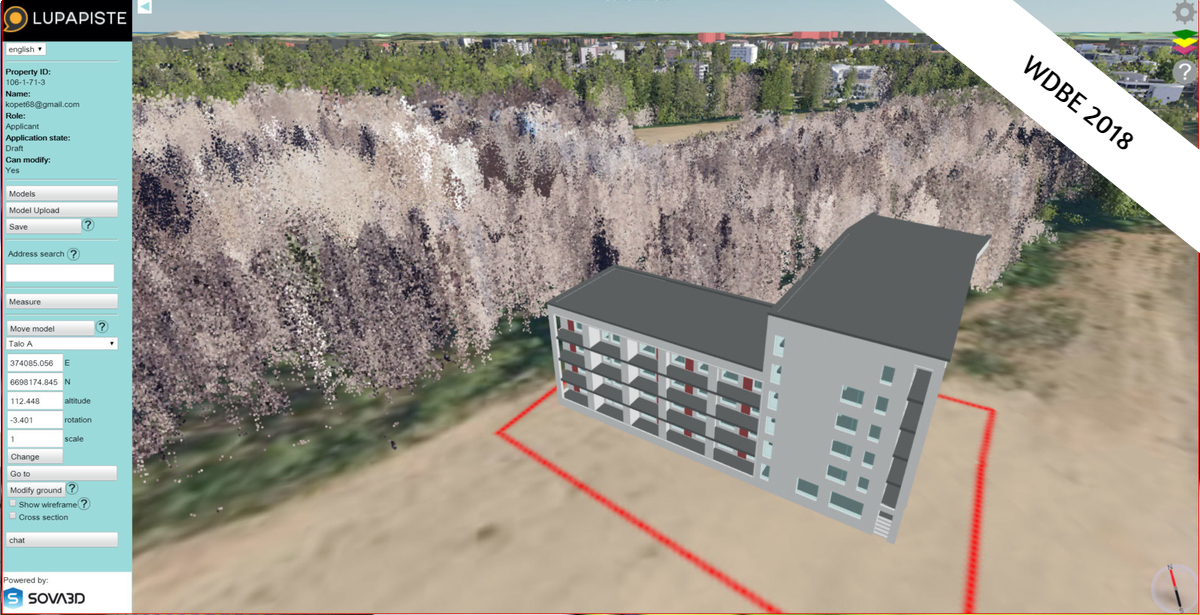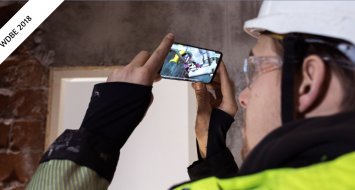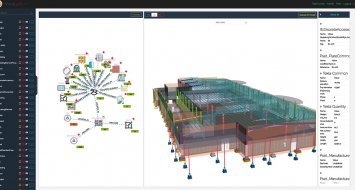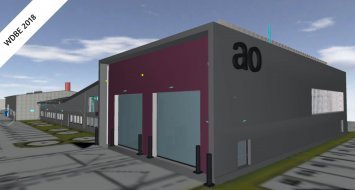
How BIM is Revolutionizing Building Control in Finland
to syysk. 06 12:05:00 2018
KIRA-digi experimentation project has demonstrated that BIM can improve the building permit process considerably
BIM is becoming mainstream in building design, but building control is still predominantly based on paper documents and 2D drawings. A Finnish KIRA-digi experimentation project has demonstrated how BIM can speed up and improve the building permit process considerably.
Three Finnish cities–Hyvinkää, Järvenpää, and Vantaa–are in the vanguard of model-based building control. Together with Evolta, Gravicon, Solibri, and Sova3D, these cities have tested a new process that uses building information models, not drawings, to apply for residential building permissions. Their experimentation project was one of over 100 projects that are part of the government’s KIRA-digi digitalization program.
Adding BIM to the Digital Building Permit Process
Over 60% of Finnish municipalities have joined an online service called Lupapiste that enables digital interaction between citizens, companies, and authorities on built environment permissions. The KIRA-digi project has made it possible to submit BIMs instead of 2D drawings for planning applications.
Sova3D, a BIM software company, provided the technology for importing platform-neutral IFC models into 3D city models. CEO Petri Kokko explains how it works: “A designer logs into Lupapiste, creates a new permit project, chooses the location of the project, and uploads an IFC model on the server. The model retains all its information, including attribute data.”
What makes the user interface of Sova3D’s software unique is that it runs in a web browser window without any additional apps. The user interface is quite intuitive and even large models with lots of details render quickly.
The user can display or hide various elements of both the building itself and its environment, e.g. neighboring buildings, vegetation, and the city plan. Users interact with each other in a chat interface and share “snapshots” of the model.
New Value from BIM
The use of BIM improves the current building control process considerably. Designers and authorities can use software like Solibri to inspect code compliance and model data quality automatically, speeding up the process and possibly revealing errors that would otherwise go unnoticed.
With a BIM model, the building inspector can visually and three-dimensionally check important features like fire compartmentation and compliance with residential regulations.
The ability to see the proposed building in its environment is perhaps the most striking new feature. In the project, the city models were augmented with data from aerial photos and laser scanning, making them quite realistic.
In the city model, it possible to see what the building looks like from any angle, how it fits into its environment, how it casts shadows on any given date at any time, and so on. Homebuyers can visit their future apartment virtually and neighbors can get a good idea of the project’s impact on the environment.
Finally, once the building is erected, it becomes an officially approved part of the city model.
New Requirements Emerge
In addition to these benefits, the project revealed shortcomings and need for improvement as well. Machine readability of the models requires accurate and complete data of critical building components, e.g. walls and fire doors. Design software don’t necessarily output that data into the IFC model and the designers must add it manually. Also, the requirements for the data are not clear.
As the existing regulations refer to paper documents, these need to be updated to include model-based processes.
“The visual quality of the city models was not satisfactory in all cases. At the ground level, it can look quite messy,” says Kokko. “We’re developing software that lets citizens and building owners improve the visual quality and accuracy on their own.”
The Timing is Right
Kokko is very satisfied with the experimentation project because it has given them an opportunity to develop and use their game-changing technology in a real-life setting with forward-looking clients and great partners.
Timing is essential to the success of small tech companies. “We introduced game engines and VR to the construction industry back in 2006, but customers were not ready to embrace them. I talked about 4D and 5D BIM several years ago with little success. We’re moving from 2D to 3D only now,” says Kokko. He believes, however, that the necessary momentum is now there.
The Finnish work on using BIM in building control has already received international attention. “Last year, we dipped our toes into the Asian market with Evolta, but that did not end up in sales. We’re definitely looking for partners who know the local environment for this kind of offering,” Kokko concludes.
Text: AE Partners
Rakennustekniikka on RIL ry:n julkaisema lehti.
Suosituimmat

BIM Meets Reality on the Construction Site
Using augmented reality the 3D model and the physical room are brought together on the mob...

Aalto University is developing and testing a service that links IoT with building informat...


